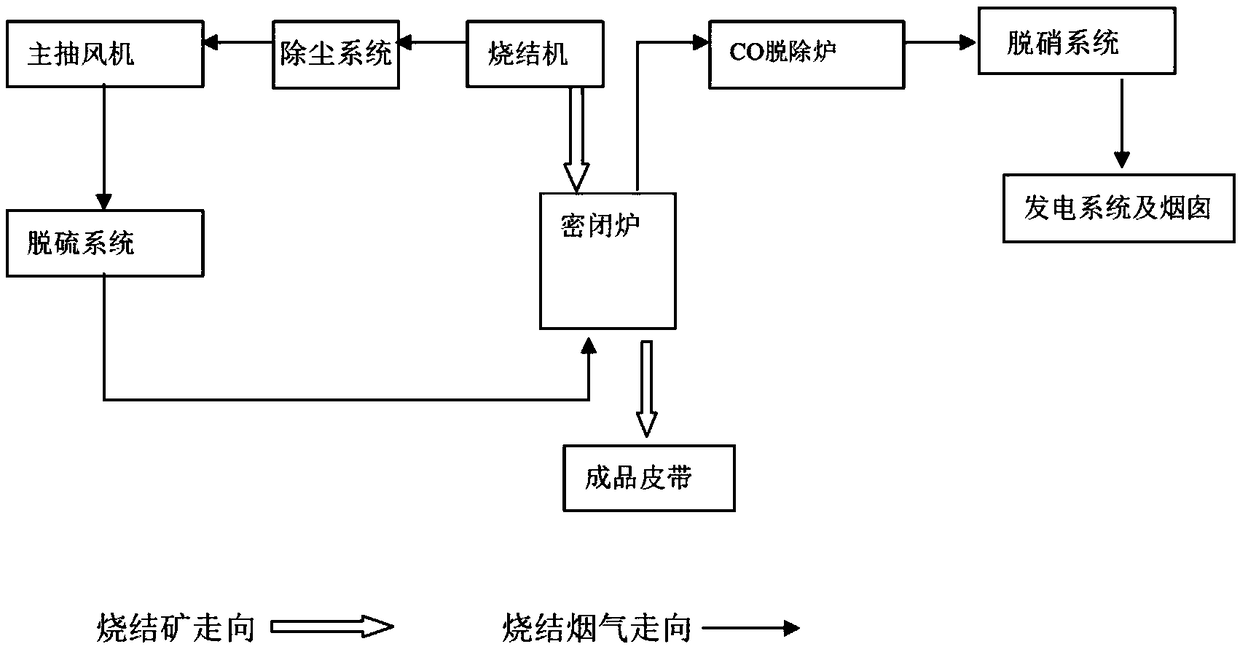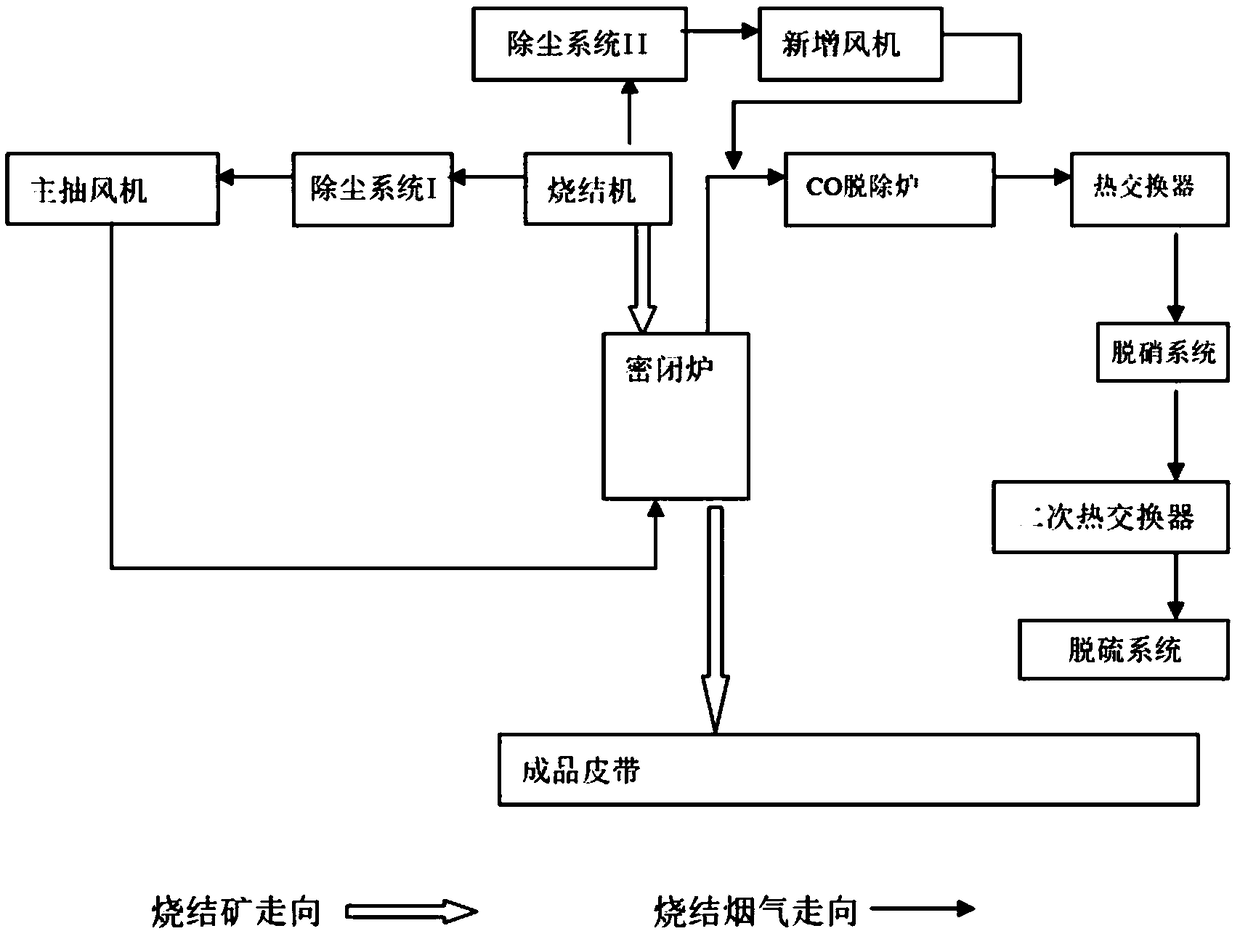Sinter waste heat and sintering flue gas pollutant cooperative treatment process
A technology for sintering flue gas and co-processing, which is applied in the field of waste heat utilization and pollutant treatment, can solve the problems of high cost of electricity consumption, no activated carbon available, large consumption of flue gas, etc., to achieve economic benefits, reduce energy consumption, improve The effect of recovery
- Summary
- Abstract
- Description
- Claims
- Application Information
AI Technical Summary
Problems solved by technology
Method used
Image
Examples
Embodiment Construction
[0030] Exemplary embodiments of the present disclosure will be described in more detail below with reference to the accompanying drawings. Although exemplary embodiments of the present disclosure are shown in the drawings, it should be understood that the present disclosure may be embodied in various forms and should not be limited by the embodiments set forth herein. Rather, these embodiments are provided for more thorough understanding of the present disclosure and to fully convey the scope of the present disclosure to those skilled in the art.
[0031] The present invention relates to a collaborative treatment process for sinter waste heat and sintering flue gas pollutants. The treatment process includes: the sintering flue gas produced by metallurgical sintering is subjected to dust removal treatment to remove particulate matter and desulfurization treatment to remove SO 2 Afterwards, heat exchange treatment is carried out with the sintered ore produced by metallurgical si...
PUM
 Login to View More
Login to View More Abstract
Description
Claims
Application Information
 Login to View More
Login to View More - R&D
- Intellectual Property
- Life Sciences
- Materials
- Tech Scout
- Unparalleled Data Quality
- Higher Quality Content
- 60% Fewer Hallucinations
Browse by: Latest US Patents, China's latest patents, Technical Efficacy Thesaurus, Application Domain, Technology Topic, Popular Technical Reports.
© 2025 PatSnap. All rights reserved.Legal|Privacy policy|Modern Slavery Act Transparency Statement|Sitemap|About US| Contact US: help@patsnap.com



